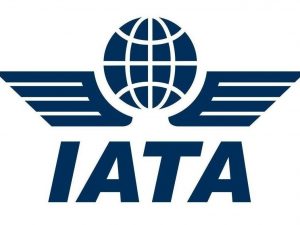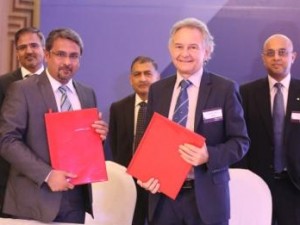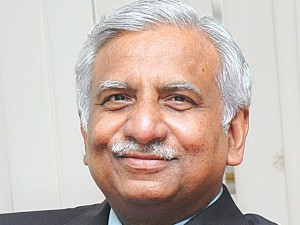Demand for domestic travel climbed 8.2% in June compared to June 2016, up slightly from the 7.9% growth seen in May. India led all markets with a 20.3% rise in domestic traffic in June. However, the very strong upward trend in traffic has slowed since the country’s unexpected ‘demonetisation’ in November 2016. India’s streak of year-on-year double-digit traffic growth may have ended with June. June capacity increased 7.0%, and load factor rose 0.9 percentage points to 84.3%. In a nutshell, air travel recorded its fastest first-half growth in 12 years, pushing load factors to record highs. And the peak northern summer travel season is likely to be record-breaking. The International Air Transport Association (IATA) announced global passenger traffic data for June showing that demand (measured in total revenue passenger kilometers or RPKs) rose by 7.8% compared to the year-ago period. “This is all good news. The demand for travel is strong and that, in turn, will make a positive contribution to the global economy. This growth will also further expose infrastructure deficiencies. In every part of the world airport and air navigation infrastructure is struggling to cope with demand. There are plenty of examples linking connectivity and economic prosperity. But few governments have been able to deliver on the imperatives of sufficient capacity, quality aligned with user needs and affordability. This year’s strong growth is a reminder that there is no time to lose,” said Alexandre de Juniac, IATA’s Director General and CEO. June capacity (available seat kilometers or ASKs) increased by 6.5%, and load factor rose 1.0 percentage point to 81.9%. For the first six months of 2017, the industry experienced a 12-year high in traffic growth (7.9%) and a …
Read More »Goh Choon Phong is new IATA Chairman
The International Air Transport Association (IATA) announced that Goh Choon Phong, CEO, Singapore Airlines, has assumed his duties as Chairman of the IATA Board of Governors (BoG) for a one-year term, effective from the conclusion of the 73rd IATA Annual General Meeting (AGM) in Cancun, Mexico. Goh is the 76th Chair of the IATA BoG, and the third CEO of Singapore Airlines to hold this position. Goh succeeds Willie Walsh, CEO of International Airlines Group. Walsh will continue to serve on the BoG and the Chair Committee. “It is an honor to serve as IATA’s Chairman for the coming year. While the industry’s global profitability may be strengthening, there is more work to be done as it is not evenly spread. Security is at the top of the agenda. We must improve our partnership with governments to meet the many emerging threats. Additionally, I will be paying special attention to progressing preparations for the Carbon Offset and Reduction Scheme for International Aviation (CORSIA), driving the modernization of cargo processes, and increasing transaction volumes with the New Distribution Capability. We have a busy year ahead. I look forward to working with Alexandre and his team to represent, lead and serve the airline industry,” said Goh. Goh joined Singapore Airlines in 1990 and held senior management roles in Singapore and overseas before being appointed CEO in 2011. He was President of the 68th IATA AGM which was held in Singapore in 2011 and has served on the IATA BoG since then. IATA also announced the BoG agreed to appoint Akbar Al Baker, CEO of Qatar Airways, to serve for a one-year term as Chairman of the IATA BoG from June 2018, following …
Read More »10.7% growth in global air passenger traffic in April’17 over April’16
Global passenger traffic for April 2017 increased by 10.7 per cent as compared to April 2016, which was the fastest pace in six years, according to data provided by International Air Transport Association (IATA). The international passenger demand in April 2017 rose 12. 5 per cent as compared to April 2016, with all regions recording double-digit year-over-year traffic increases for the first time in 12 years. Total capacity climbed 7.7 per cent and load factor climbed 3.5 percentage points to 81.5 per cent. Demand for domestic travel climbed 7.7 per cent in April compared to April 2016, while capacity increased 6.2 per cent, causing load factor to rise 1.2 percentage points to 83.0 per cent. All markets reported demand increases with the exception of Australia, which showed a 2.1 per cent decline. IATA attributed the strong performance to a pick-up in global economic activity and lower airfares. After adjusting for inflation, the price of air travel in the first quarter was around 10 per cent lower than in the year-ago period and it was estimated that falling airfares accounted for around half the demand growth in April. However, it was also noted that the cabin ban on the carriage of large portable electronic devices (PEDs) from 10 Middle Eastern and African airports to the US seemed to have weighed down Middle East-North America passenger traffic. “April showed us that demand for air travel remains at very strong levels. Nevertheless there are indications that passengers are avoiding routes where the large PED ban is in place. As the US Department of Homeland Security considers expanding the ban, the need to find alternative measures to keep flying secure is critical. If the …
Read More »Passenger demand hits 5-year peak in January
The International Air Transport Association (IATA) announced global passenger traffic results for January 2017 showing demand (revenue passenger kilometers) rose 9.6% compared to January 2016. This was the strongest increase in more than five years. Domestic air travel climbed 9.9% in January year-on-year. India led domestic all markets in year-to-year growth for the 22nd month in a row; January traffic soared 26.6%, marking the 15th consecutive month of 20%-plus annual growth. Demand is being stimulated by strong flight frequency. Capacity increased 8.7% and load factor was 80.1%, up 0.9% percentage points. January international passenger traffic surged 9.3% compared to the year-ago period. Capacity rose 7.5% and load factor climbed 1.3 percentage point to 80.3%. All regions recorded year-over-year increases in demand led by the Middle East and Asia Pacific. Asia Pacific carriers recorded an increase of 10.9% compared to January 2016, helped by the impact of Lunar New Year-related travel and solid growth on routes within Asia. Capacity rose 8.9%, pushing up load factor 1.5 percentage points to 81.4%. “2017 is off to a very strong start, with demand at levels not seen since 2011. This is supported by the upturn in the global economic cycle and a return to a more normal environment after the terrorism and political ‘shock’ events seen in early 2016,” said Alexandre de Juniac, IATA’s Director General and CEO. IATA estimates the holiday-related travel contributed up to one-half a percentage point in extra demand growth. January capacity rose 8.0%, and load factor climbed 1.2 percentage points to 80.2%. IATA (International Air Transport Association) represents some 265 airlines comprising 83 per cent of global air traffic.
Read More »Travelport becomes first GDS to receive IATA’s NDC Aggregator certification
Travelport announced that it has become the first GDS to be granted with both ‘Aggregator Level One’ certification and ‘IT Provider Level Two’ status by the International Air Transport Association (IATA) as part of its New Distribution Capability (NDC) programme. For airlines, this means that Travelport is able to fully integrate with its NDC application programme interface should the airline choose to use NDC-XML messaging to distribute and deliver their fares and products. For travel agencies and travel management companies, this means that when shopping for and booking flights via Travelport’s Travel Commerce Platform, they will have even more enhanced travel content and greater access to ancillary offers. In particular, Travelport-connected agents will be able to make ancillary sales post the original flight booking, and through their preferred agency workflows, for the first time. Travelport has also achieved the NDC-capable ‘IT Provider’ Level Two status, making it only the second organisation—and first GDS–ever to be designated as NDC certified and NDC Capable. This further expands its NDC capabilities and means that Travelport also has the option to distribute IATA NDC offers for fares and prices on behalf of the airlines electing to use IATA’s industry standards.
Read More »India records double digit growth in domestic passenger demand in Sept
India and China continued to register double-digit growth in domestic passenger demand in September 2016, according to International Air Transport Association’s (IATA) global passenger traffic report. The results showed that global demand, measured in revenue passenger kilometers (RPKs) grew 7 per cent compared to the same month in 2015. This was the strongest year-over-year increase in seven months. Capacity climbed 6.6 per cent and load factor edged up 0.3 percentage points to 81.1 per cent. Growth in domestic traffic slightly outpaced growth in international traffic. Domestic passenger demand climbed 7.2 per cent in September as compared to September2015, which was up from the 4.1 per cent year-on-year growth recorded in August. International RPKs climbed 6.9 per cent with airlines in all regions recording growth compared to 2015. Total capacity climbed 7.2 per cent, causing load factor to slide 0.2percentage points to 80.4 per cent. “September’s growth in passenger demand was healthy. Importantly, this rebound from August weakness suggests that travel demand is showing its resilience in the aftermath of terror attacks. We must, of course, be ever-alert to the ongoing terror threat. And overall the industry is still vulnerable to being buffeted by rising geopolitical tensions, protectionist political agendas, and weak economic fundamentals. This will still be a good year for the airline industry’s performance, but our profitability will continue to be hard-won,” said Alexandre de Juniac, Director General and Chief Executive Officer, IATA.
Read More »IHCTM offers early-bird discount exclusively to trade
The Institute of Hotel, Cargo and Tourism Management (IHCTM), a training division of Namaste Tourism, has announced a special trade discount for those who wish to attend its ‘Managing the Travel Business’ program with diploma awarded by International Air Transport Association (IATA) Montreal, Canada. The total fees for the course including the training, examination and registration for IATA along with applicable service tax is Rs 71,300. However, the institute is offering members of the trade a 20 per cent discount on early enrolment before 26 November, 2016. This will take the total course fee to Rs 46,900. This offer is exclusive for the travel trade. Subhash Motwani, Director, IHCTM, says, “The travel industry is changing every day and the Management – level 3 IATA program can equip a tourism professional with the latest global trends of travel and tourism industry. The course will include topics such as Managerial Skills, Negotiation Skills, Special Interest Tours, MICE, Technology In Travel Industry, Financial Management & Accounting, BSP Agent, Billing Reports & Remittance and Marketing.” Classes will be held in Mumbai at Colaba and Mahim centres starting from December 5 onwards.
Read More »IATA and BIAL collaborate to improve airport processes
The International Air Transport Association (IATA) and Bangalore International Airport Limited (BIAL) have signed a Memorandum of Understanding (MoU) to enhance cooperation in various areas of airport operations, including security, passenger experience, cargo, airport development, consulting and training. The MoU was signed by Conrad Clifford, IATA’s Regional Vice President for Asia Pacific, and Hari Marar, BIAL’s President for Airport Operations, on the sidelines of an industry event in New Delhi. This MoU is the first of its kind that IATA has signed with an Indian airport. One of the highlights of the MoU could see IATA and BIAL implementing trials of new technologies and processes, and testing concepts at Bangalore International Airport. “This will place Bangalore International Airport in the forefront of airport operations. These trials will ensure that global best practice solutions can be appropriately adapted to the Indian environment, and will provide guidance for rolling out the implementation to other Indian airports,” said Clifford. The IATA Fast Travel initiative, Passenger Facilitation program and Smart Security are among the initiatives being considered as part of the MoU. “An important objective of the MoU is to promote the efficient development of civil aviation in India to meet growing demand. By 2035, India’s passenger traffic is forecast to exceed 400 million passengers, more than double that of today. The industry will support 19 million jobs and $172 billion of India’s GDP. But for this potential to become reality, India’s airports need to have the necessary infrastructure capacity while implementing efficient processes that embrace the latest technologies,” said Clifford.
Read More »India’s domestic traffic up by 23.3% in June
India continues to lead all markets with a 23.3 per cent rise in domestic traffic in June, propelled by strong growth in real consumer spending as well as by the fact that airlines are adding airport pairs and frequencies. This was revealed in International Air Transport Association’s (IATA) global passenger traffic data for June. Demand for domestic travel climbed 5.7 per cent this June compared to June 2015, while capacity increased 4.3 per cent, causing load factor to rise 1.1 percentage points to 83.2 pre cent. All markets reported demand increases with the exception of Brazil. Domestic RPKs account for about 36 per cent of the total market. The global passenger traffic data for June showing that demand (measured in revenue passenger kilometers or RPKs) rose by 5.2% compared to the year-ago period. This was up slightly from the 4.8% increase recorded in May (revised). However, the upward trend in seasonally-adjusted traffic has moderated since January. June capacity (available seat kilometers or ASKs) increased by 5.6%, and load factor slipped 0.3 percentage points to 80.7%. “The demand for travel continues to increase, but at a slower pace. The fragile and uncertain economic backdrop, political shocks and a wave of terrorist attacks are all contributing to a softer demand environment,” said Tony Tyler, IATA’s Director General and CEO.
Read More »Naresh Goyal on IATA Board of Governors
Naresh Goyal, Chairman, Jet Airways, has been elected on the Board of Governors (BoG) of International Air Transport Association (IATA). The announcement was made at the IATA AGM held at Dublin from the June 1-3, 2016. While Willie Walsh, CEO, Aeromexico, has been elected as the Chairman of IATA Borad of Governors.
Read More » Tourism Breaking News
Tourism Breaking News





